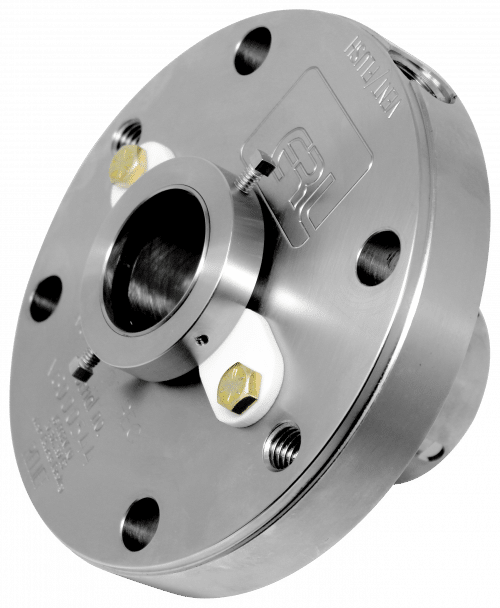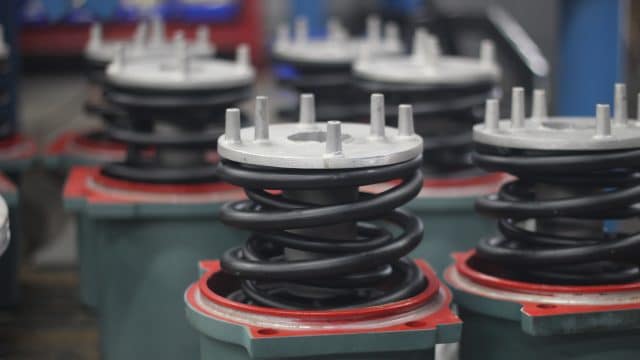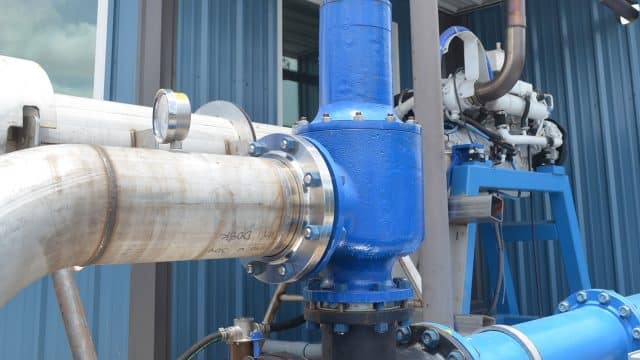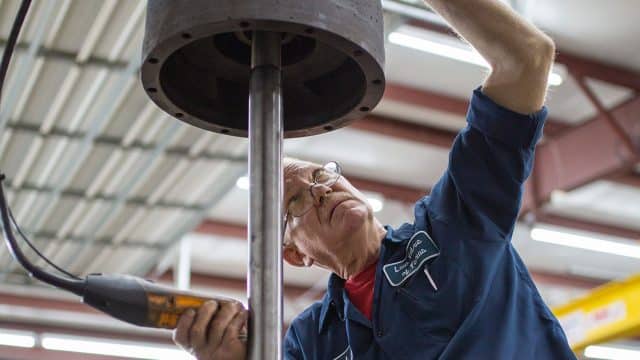In 2021, analysts valued the global barge transportation market at $147.5 billion. Barge transportation is a critical element of international supply chains.
Every hour a barge is delayed due to mechanical failure, industries hemorrhage revenue. Sometimes these losses total into the millions.
The ripple effect of those failures is felt the world over—sometimes for years after the fact. In worst-case scenarios, mechanical failures lead to drift, which leads to catastrophic civil damage.
These losses are preventable. A ship-shape barge requires top-quality gear. That includes high-caliber mechanical seal pump options.
But which options are right for your barge? With this quick guide, you’ll learn the distinctions and merits between ten general categories of mechanical seals. Then, we’ll empower you to explore the best choice for your barge.
What Are Mechanical Seals?
A mechanical seal is a device that uses pressure to join different mechanical components or systems together. On a barge, the mechanical seals are components of centrifugal pump systems.
Engineers place mechanical seals at the point within a pump where the shaft connects to the drive. These seals typically keep fluid in and contaminants out.
Often, a mechanical seal protects barrier fluid, like synthetic fluorinated oil. Barrier fluids reduce the friction of rotary pumps, mixers, and agitators. They also cool mechanical seal faces.
Parts of a Mechanical Seal
Most mechanical seals have two flat seal faces. The seal arrangements are critical. Engineers install these faces perpendicular to the pump shaft.
One face rotates with the shaft. This is the face that creates the primary seal. The other face is stationary. An engineer mounts it in the discharge head near the shaft-drive connection. Some mariners use to call a stuffing box, which could leak
Mechanical Seal Support Systems
The mechanical seal does not function independently. Instead, it thrives in a matrix of support systems.
One component of these support systems could be a heat exchanger. A heat exchanger is a plate, tube, or set of pipes that transfer thermal energy among fluids in a system.
In this context, the heat exchanger cools the mechanical pump seal. Specifically, it transfers coolant fluid to the mechanical seal, which draws away its heat energy. This preserves the mechanical seal for long-term use.
How Do Mechanical Seals Work?
In addition to its faces, a mechanical seal typically incorporates a spring mechanism. The spring mechanism applies pressure, which presses the stationary and rotating faces of the seal together.
The mechanism must apply the correct amount of pressure. Higher pressure mechanisms run an elevated risk of wear and tear on the seal. But, if the pressure is not strong enough, it runs the risk of leakage.
There is some risk that the heat generated by the friction between the two faces could melt or damage the seal. So, cooling lubricant is a critical element.
Alternate Forces
Some mechanical seals utilize different forces to press the two faces together.
For example, the kinetic energy of the hydraulic force of the pump can act as a closing force. A mechanical seal may take advantage of this force instead of incorporating a spring.
Materials for Mechanical Seals
Engineers have developed seals from different materials.
These materials can take advantage of physical forces differently. They also have different capacities to withstand vibration. The most common mechanical seal face materials are:
- Ceramic
- Glass-filled polytetrafluoroethylene (GFPTFE)
- Silicon carbide
- Tungsten carbide
- Ni-Resist alloys
GFPTFE is a thermoplastic polymer. PTFE is Teflon. These materials have different strengths, melting points, and degrees of surface smoothness and thermal resistance.
These traits determine whether a given material is appropriate for the seal on your pump.
Ceramic
Engineers use multiple types of ceramic to create mechanical seals. One popular option is aluminum oxide ceramic. This material is highly chemical-resistant.
Benefits
Ceramic mechanical seals have high hardness and low thermal conductivity. This makes them ideal for water-based applications.
Drawbacks
Ceramic seals are not the right choice for dual seals. Ceramic’s low thermal conductivity raises the operating temperature. It cannot let heat dissipate fast enough.
Utility
Most engineers choose ceramic for split-seal applications. They typically utilize a fluid cooling agent.
GFPTE
These mechanical seals incorporate glass or graphite fillings. They are typically radial shaft seals. Engineers design them to withstand high-pressure, dry-heat environments.
Benefits
GFPTFE is highly chemical-resistant. It uses minimal energy, and it has high lubricity. It also has a high-enough melting point that it’s well-suited to hot applications.
Drawbacks
GFPTFE does not resist abrasion well. It is also somewhat fragile. When compressed, it tends to remain compressed, so it does not serve high-elastic needs.
Utility
Choose a GFPTFE mechanical seal in dry contexts. Or, use it when it must combat aggressive fluids with its own lubricity.
Many engineers use these seals in medical equipment and pneumatic applications.
Silicon Carbide
Silicon carbide is near-diamond in terms of hardness. To create a silicon carbide seal, engineers either create a reaction bond, or they trigger a sinter bond.
Sintered silicon carbide is the most wear-resistant and chemically-resistant mechanical seal material.
Benefits
Silicon carbide is corrosion-resistant. It readily conducts thermal energy. You can use silicon carbide seals when you need stiffness in extreme contexts.
Drawbacks
Silicon carbide is not as tough as tungsten. It has limited impact-stress resistance. It has little lubricity.
Utility
Nuclear reactor developers use silicon carbide seals as blanket components. Computer engineers use silicon carbide as a thin-film semiconductor.
It’s a popular seal material in energy and aerospace machinery.
Tungsten Carbide
Tungsten carbide is a strong material. It typically uses nickel as a binder. The binder content increases the seal’s toughness, but it reduces its overall hardness.
Benefits
Tungsten carbide has the highest tensile strength of all mechanical seal materials. Some compositions are chemically resistant. It also resists abrasion effectively.
Tungsten carbide also resists seal face distortion.
Drawbacks
Tungsten carbide risks creating high frictional heat. Engineers must account for that heat in any dual-seal arrangement with tungsten carbide seals.
Nickel-bound tungsten carbide seals should not interact with ammonia.
Utility
Engineers often choose tungsten carbide seals in high-pressure applications. This material is also well-suited to high-vibration and high-torque settings. It’s a popular seal choice for sewer pumps.
Mechanical Seal Pump vs. Stationary Seal
Mechanical seals have two faces, one of which is in motion. In contrast, stationary seals secure pump components that don’t move.
Stationary seals are hermetic seals. Engineers typically use an o-ring or a lip seal if they need a hermetic seal.
Mechanical Seals by Seal Type: Overview
Engineers categorize seals in three ways.
There are single and double mechanical seals. A seal might be balanced or unbalanced. And, a mechanical seal may be a pusher or a non-pusher.
Besides these binary categorizations, it’s wise to familiarize yourself with a few specific seal types.
Single vs Double Mechanical Seals
A single mechanical seal has two faces. A double mechanical seal has four.
Double seals require a dedicated buffer. Typically this is a barrier liquid. In contrast, a single mechanical seal simply incorporates the pump’s fluid as a lubricant.
Balanced vs Unbalanced Seals
A balanced seal has a balance ratio under 100%. This means engineers have altered the fluid closing forces on the different seal faces, via the seal’s design.
The ratio of the fluid pressure on the closing area to the pressure on the opening area is 1:1 or lower.
An unbalanced seal manipulates closing forces in the opposite direction. The ratio of fluid forces between the closing area and the opening area shifts in favor of the opening area. It is over 100%.
The typical balance seal’s ratio ranges from 60-90%. Unbalanced seal ratios generally range from 110-160%
Pusher Seals vs Non-Pusher Seals
If the mechanical seal has a secondary seal that moves along the axis of the first seal face, it’s a pusher seal.
In contrast, the secondary seal of a non-pusher remains stationary. Typically, engineers position this stationary seal against the shaft or sleeve.
Conventional Seals
A conventional seal might be a lip seal or o-ring.
Its designer did not create it for mechanical seal purposes. But, an engineer can utilize a general purpose seal to create a multi-faced mechanical seal.
Cartridge-Type Seals
A cartridge-type mechanical seal is an enclosed system. A manufacturer pre-assembles its components. It incorporates gland and sleeve hardware.
The unit’s self-containment simplifies installation and maintenance.
The cartridge-type seal ensures that the seal’s assembly is accurate. It reduces the opportunities for human error.
Unitized
Unitized cartridge seals are distinct, custom units. Engineers may commission unitized cartridge mechanical seals when leakage would be highly hazardous.
Bellows Seals
A bellows is any device that incorporates collapsible sides. These devices can expand and contract under force. This can be mechanical forces or hot air.
A bellows mechanical seal incorporates a bellows instead of a spring. It is a non-pusher seal. Its secondary seal is static (typically an o-ring).
The bellows itself is a load element in the context of the seal.
Bellows mechanical seals are either half- or full-convolution. Half-convolution bellows travel half the distance along the axial shaft as a full-convolution bellows.
Convolution is the result of wave multiplication. Bellows mechanical seals are, typically, elastomer or metal. GFPTFE and rubber bellows seals are rarer.
General Duty Bellows Seal
Some manufacturers list general duty bellows seals as a mechanical seal option. But, it’s wisest to consider these elastomer seals as a potential component of a mechanical seal.
It will not function as a whole mechanical seal.
Barge Pump Products and More
At ERL Inc, we know barges.
Since 1970, our mechanical engineers have mastered the craft of marine product design and fabrication. Whether you need a mechanical seal pump or an up-to-code vent stack, we’ve got you covered. We know every barge is different. That’s why we offer barge packages tailored to a wide range of operating conditions. And, every package and product can be customized to your barge. Contact us.






